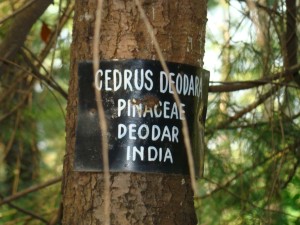Economic Importance of Cedrus deodara

Kingdom: Plantae
Family: Coniferae
Genus: Cedrus
Species: C. deodara
Common name: Deodar
Description: Tall, evergreen tree dark-green foliage, forming a typical conical crown. Branches two types, long shoots bear spirally arranged leaves, dwarf shoots bear cluster of leaves in pseudowhorls. The dwarf shoots elongate lightly, adding a new whorl of leaves each year. Flowers monoecious, male and female cones occurring on separate branches.
Economic Importance:
- Deodar is widely regarded as one of the strongest woods in India and is as important as Teak. Timber is easy to saw. It is unsuitable for polish or print work as the oil in the wood (especially near the knots) always oozes through when exposed to direct sunlight and discolours the coating.
- It is easy to air-season but shows a little tendency to surface- cracking and end-splitting if dried too quickly, for this reason it should be air-seasoned under cover. It can also be kiln-seasoned easily without degrade. Seasoned heartwood of deodar is very durable and classified as durable class 1. The durability of deodar may be due to the presence of terpenes/resin acids present in the heartwood.
- Used primarily in buildings for beams, door and window frames and shutters and classified under group 1 timbers. Also used for furniture making and cabinet making to a limited extent. The thinning poles of deodar are suitable for overhead power and telecommunication lines. It is also used for making cases and donnage pallets. Also found suitable for manufacture of high class pencils, cooling towers, drawing equipments, jute and textile mill accessories, wooden shingles, railway carriages, model and pattern making, keys of stairs etc.


